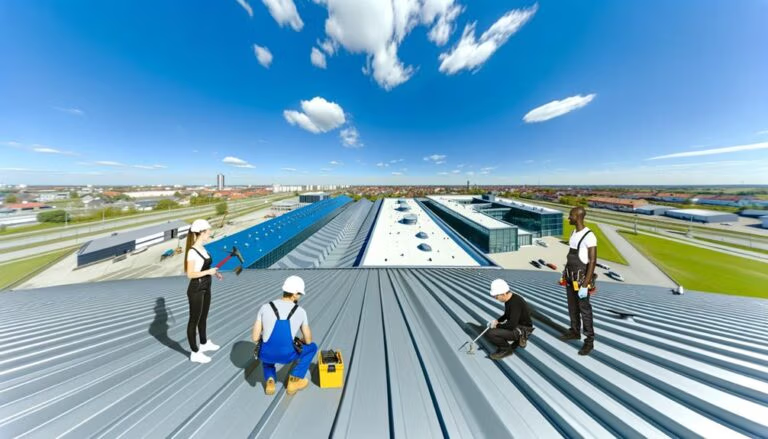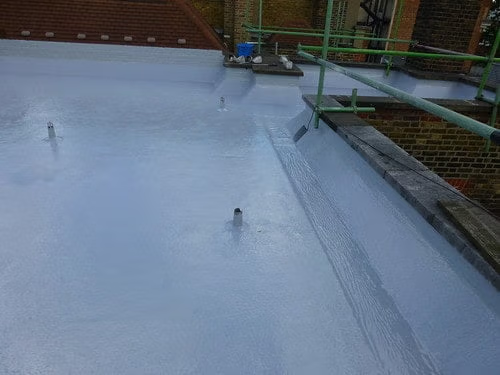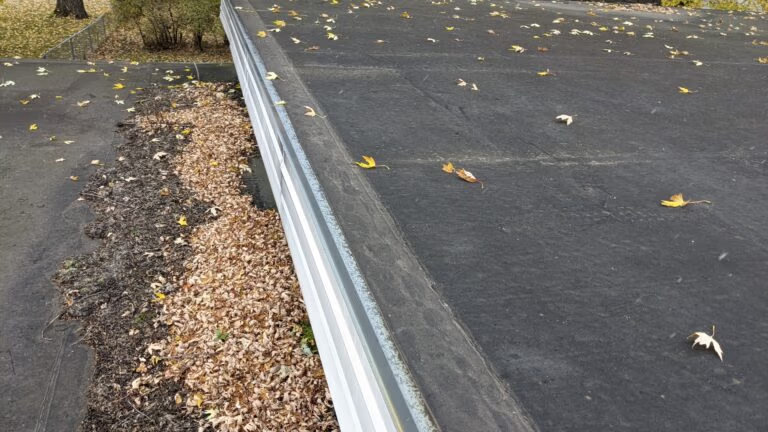After commercial roof repairs, ensure proper drainage by conducting thorough inspections for wear, sagging, and standing water. Keep gutters clean to prevent blockages and direct downspouts away from the building. Adjust the roof slope to guide water towards gutters, avoiding flat areas prone to pooling. Install gutters, downspouts, and scuppers for effective water flow. Regular maintenance and monitoring post-repairs are vital to prevent issues. Proper drainage is key to protecting your building. Remember, a well-maintained drainage system can save you from future headaches.
Ensuring Effective Drainage After Commercial Roof Repairs
- Clear gutters and downspouts of debris post-repairs.
- Verify proper slope adjustment for effective water flow.
- Inspect drains and scuppers for functionality.
- Ensure downspouts direct water away from the building.
- Regularly maintain and monitor drainage systems.
Roof Inspection
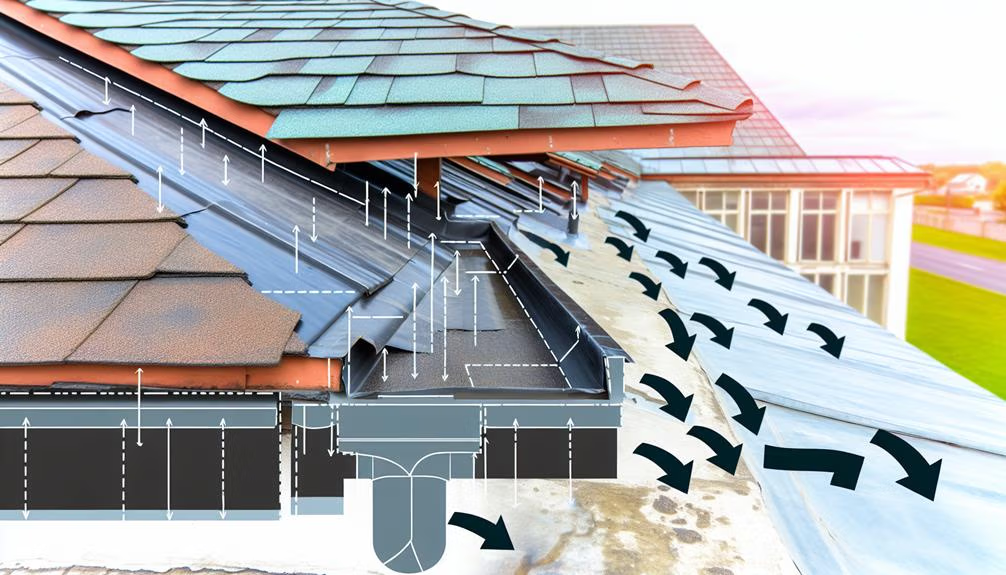
When it comes to ensuring proper drainage after roof repairs, the first crucial step is conducting a thorough roof inspection.
Checking your roof condition is key to preventing water pooling issues that could lead to further damage. Start by visually inspecting the roof for any signs of wear and tear, such as cracked or missing shingles, sagging areas, or debris buildup that may impede proper water flow.
After assessing the roof's overall condition, pay close attention to areas where water pooling is most likely to occur, like flat sections or areas near drains.
Look for signs of standing water or discoloration that could indicate drainage problems. Addressing these issues promptly can prevent potential leaks or structural damage in the future.
Gutters and Downspouts
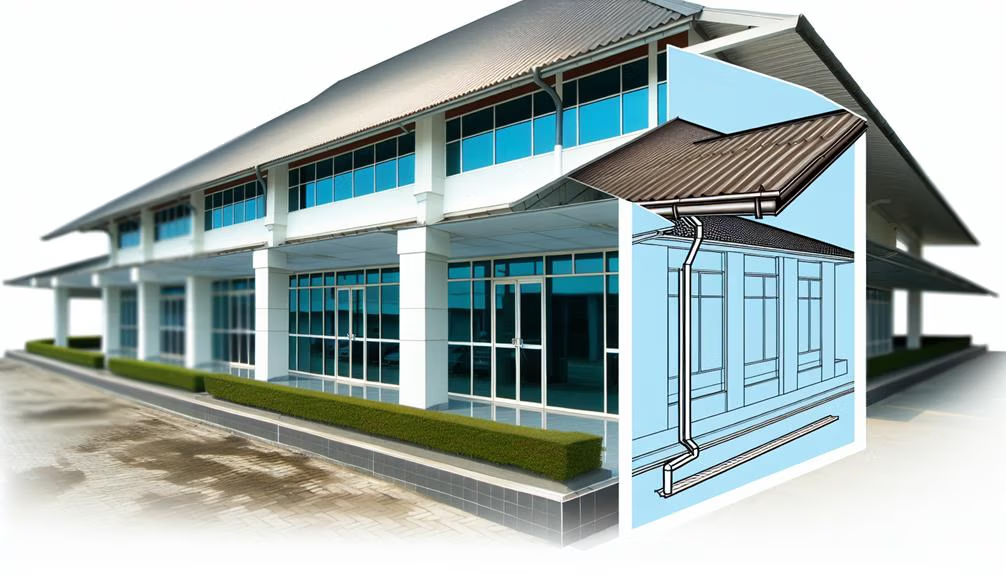
To ensure proper drainage after roof repairs, one essential aspect to focus on is your gutters and downspouts. Keeping your gutters clean is crucial for effective water flow off your commercial roof. Regular gutter cleaning prevents blockages that can lead to water backup and potential damage to your building.
Make sure to remove any debris like leaves, twigs, and dirt that may clog the gutters.
Additionally, downspout placement plays a significant role in directing water away from your building's foundation. Ensure that downspouts extend at least 5-10 feet away from the base of your commercial property to prevent water from pooling around the structure. This simple step can help protect your foundation from water damage and potential leaks.
Regularly inspecting your gutters, cleaning them, and maintaining proper downspout placement are essential practices to ensure your commercial roof's drainage system works effectively after repairs.
Slope and Pitch Adjustment
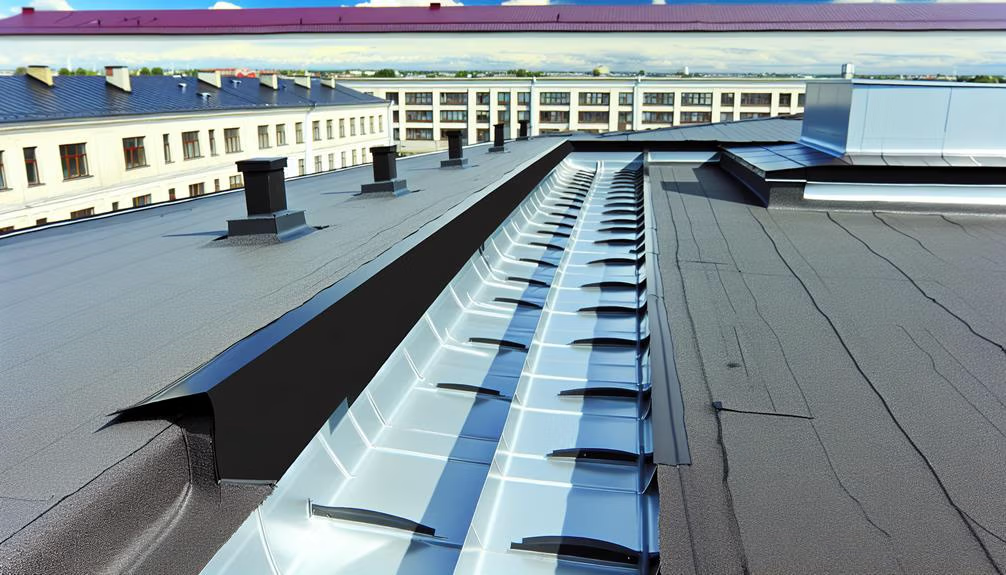
Adjusting the slope and pitch of your roof is a crucial step in ensuring proper drainage post-repairs. By making sure that your roof has the right angle, you can effectively direct water flow towards the gutters and prevent any pooling or leaks.
When the slope is too flat, water can accumulate and cause damage to your roof over time. On the other hand, if the pitch is too steep, it may lead to water runoff issues.
To adjust the slope and pitch, you may need to work with a professional roofer who can determine the ideal angles for your roof. They may suggest using specific drainage materials to enhance water flow and prevent any future problems.
Properly adjusting the slope and pitch won't only improve the functionality of your roof but also extend its lifespan. So, don't overlook this important aspect when planning your commercial roof repairs.
Proper Drainage Installation
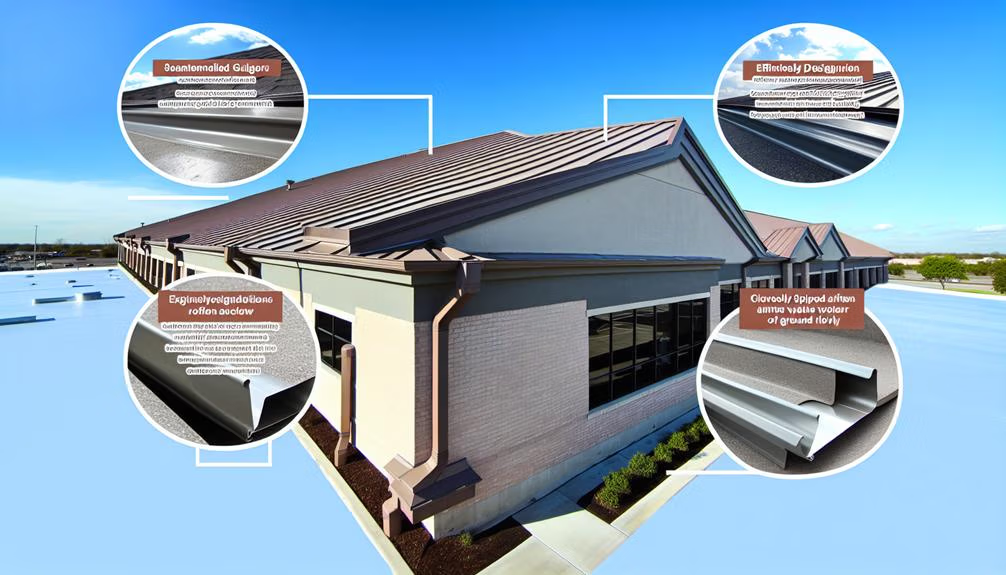
For optimal roof performance and longevity, ensuring proper drainage installation is key. Proper drainage systems are essential for effective water management, preventing water accumulation that can lead to leaks and structural damage. When it comes to commercial roof repairs, paying attention to drainage is crucial to avoid future issues.
To ensure your commercial roof has the right drainage setup, consider the following components:
| Component | Description |
|---|---|
| Gutters | Direct water away from the roof's edges. |
| Downspouts | Carry water from the gutters down to the ground. |
| Scuppers | Allow water to drain from the roof parapet walls. |
| Drains | Provide an exit point for water on flat roofs. |
Maintenance and Monitoring
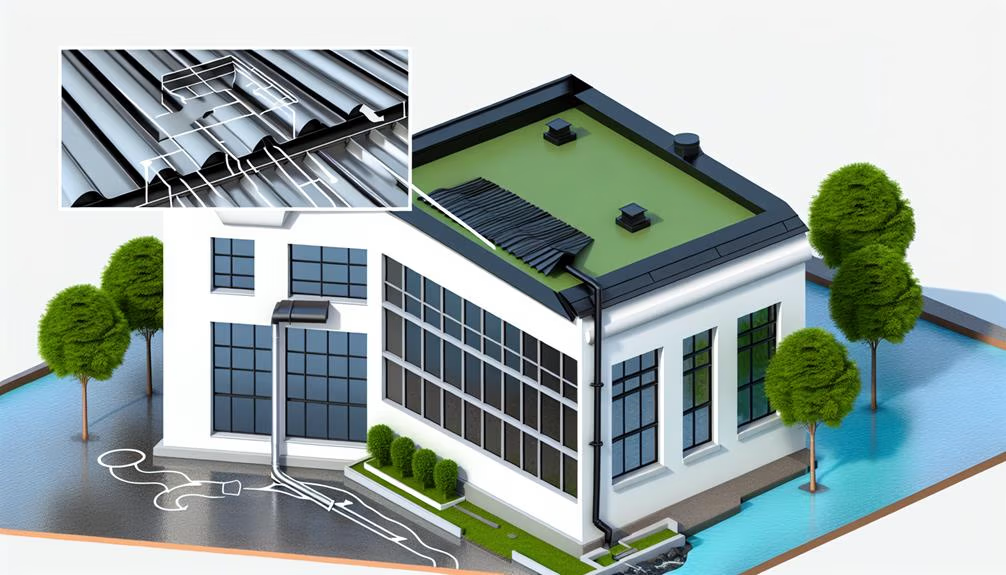
Regular maintenance and monitoring are essential for the longevity and performance of your commercial roof. By keeping a close eye on your roof, you can catch any issues early on, preventing them from turning into costly repairs down the line.
One crucial aspect to focus on is your drainage systems. Ensuring they're clear of debris and functioning properly will help prevent water pooling, which can lead to leaks and structural damage.
To maintain your drainage systems, schedule regular inspections to remove any blockages and ensure the water flows freely. It's also important to monitor the condition of your roof after heavy rainfall or storms to check for any signs of water pooling.
Keeping your roof clean and well-maintained won't only extend its lifespan but also help prevent any drainage-related problems that could arise.

